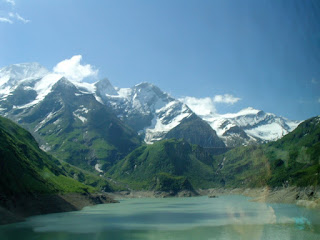In June 2005 I cashed in some Starwood loyalty points for a Queen's Birthday weekend at the
Sheraton Mirage in Port Douglas. I've always wanted to give this resort a go. Therefore, an opportunity for Garry and me to do so on the cheap was simply too good to pass up.
When the resort first opened in 1987, it was considered one of the South Pacific’s most exclusive destinations. It cost a reported $100 million to build and transformed, literally overnight, a sleepy coastal town into a playground for the rich and famous. In the years since, the likes of Bill and Hillary Clinton, Mick Jagger and Jerry Hall, Luciano Pavarotti, and Leonardo DiCaprio have all stayed there.
The resort boasts a golf course, expansive beachfront access, and a sprawling network of ten artificial lagoons that give most rooms a stunning water view. Our room was tucked away in a quiet corner with a sheltered balcony looking out over one of the smaller, more secluded, lagoons. The room’s only downside was its southern-facing aspect. As a result, it received very little direct sunlight for most of the day. You can see Garry hanging over the balcony in the image above (and me delivering a rather convincing whale simulation).
Sadly parts of the resort seemed to show their age. I recall some of the decor felt a little out of place and fittings in the public spaces looked a little tired despite a supposed refurbishment the previous year. However, the food was excellent including a dinner we enjoyed at a fusion-style restaurant near the golf course.
We ultimately enjoyed a four-day long weekend in Far North Queensland. We kicked off our vacation with a night at Reef House in Palm Cove on Friday 10 June, followed by two nights (three days) in Port Douglas, and a final night in Cairns. The Reef House kindly upgraded us to one of its larger Verandah Rooms overlooking its tropical gardens and courtyard swimming pool. It was refreshing to sit on its open deck looking across to the beach as we enjoyed a leisurely breakfast the following morning. Winter in far North Queensland is definitely my idea of the perfect "cool season".
We made the most of our rental car by visiting Mossman Gorge, driving north as far as the Daintree River, and driving up to Kuranda (rather than catching the train which was undergoing maintenance at the time). However, driving the coastal escarpment was an experience of its own. As the road zigzagged its way up the hillside the narrow coastal plain slowly revealed itself. While in Kuranda we also drove to the Barron Falls lookout on the outskirts of town. The falls were barely flowing the day we visited. Although the exposed rock face was still an impressive sight.
The termite mounds along the road heading north also caught our eye. In the years since we've subsequently seen them many times in the
Northern Territory and Central Queensland. It's fascinating to look back at how something like this became a familiar sight at some point. It's obvious from the many photos we took in the Daintree area that they were a rather unique, and memorable, vacation highlight.
Perhaps the only disappointment we experienced was our final night's accommodation at
Cairns Queens Court. We had an early flight home on Tuesday so I booked us into a cheap Cairns hotel on Monday evening to save money.
This proved to be a false economy as the hotel's $69 "budget" room turned out to be a backpacker hostel set-up. We had a private room but, to our horror, it only offered a communal bathroom for showers and amenities. It was a real comedown after living it up at the Mirage.
Final night aside, all in all, this quick weekend dash was a wonderful way to kick off our final months in Australia as we prepared to
relocate to London.























































